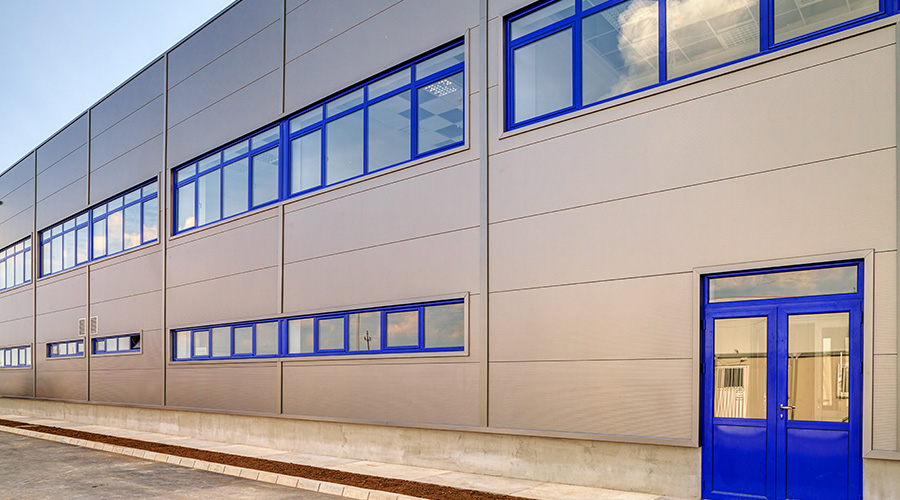Paint Certifications Balance Green and Performance Benefits
All too often, facility managers think that buying green requires them to simultaneously relinquish performance.
Not so anymore, say paint certifiers. "The holy trinity for manufacturers is achieving top-level performance, low VOCs and the best IAQ numbers," says Gina Fleitman, director of marketing for the Master Painters Institute. "That's why — although we have a battery of green tests — we do not certify for green's sake, because paint should perform."
Fleitman continues: "For any paint to be approved by MPI, our lab performs a battery of tests — ASTM and others — that appropriately measure performance for each type of paint and gloss level."
She says that approved interior latex paints, as one example, must pass minimum requirements for dry time, consistency, hiding power, reflectance, alkali resistance, burnish resistance, scrubability, flexibility, and more.
Chipperfield of Green Seal agrees. At the center of most paint purchases are performance issues, she says.
"The paint we certify still performs as well or better than a non-green counterpart," she says. "They must be more sustainable yet still work as well."
Chipperfield says Green Seal uses a battery of ASTM test results for basic performance before testing begins. "We want to make sure that the way it applies and flows meets expectations," she says. "It should meet ASTM's opacity standards; it must be corrosion-resistant, alkali-resistant, etc."
She also says that the balance between performance and environmental credibility involves fighting a few myths, battling a number of stigmas that likely don't apply to green products anymore.
One of those myths, she says, is that green products are too expensive. "The cost has gone down on many of the products, and they're as good or better than non-green products."
She also says that, in her experience, end-users don't always realize that highly credible, name-brand paints are available that have high "green" scores.
Greenguard does not test a product's performance — only its chemical emissions. "That said, if our certified paints suffered from poor performance, a lack of market demand for them would surely push them off store shelves," says Bloech.
Confused by Certifiers?
One of the observations nearly every paint certifier noted is that end-users occasionally seem confused by the number of paint certifiers on the market.
"What we hear is that when building owners, contractors, or facility managers are trying to meet certain guidelines or municipal mandates, they prefer to look for certified products because it's easier than sorting through the criteria," says Chipperfield. "The secret is to find products that are specified in LEED criteria. That's a well-known indication that the paint will perform and is green."
Similarly, Fleitman argues that seals approved by organizations like MasterSpec are another good indicator of quality.
One of the problems, certifiers say, is that manufacturers are "certifying" green products. That's why facility managers should look for an impartial certifying organization. In other words, read the fine print of the seal, and make sure the so-called certification isn't simply a seal the manufacturer pays to put on the can. And when facility managers choose paint certified by one of the groups here — or that are specified by LEED, Green Globes or others — chances are higher that it will perform well and not cause undue indoor air quality concerns.
Loren Snyder, a contributing editor for Building Operating Management, is a writer who specializes in facility issues. He was formerly managing editor of Building Operating Management.
About Paint Certifiers
- The Master Painters Institute (MPI) can trace its origins back to 1885, when the Master House Painters Association of the United States and Canada was formed, based in New York City. The organization has gone through a number of name changes since then, but became the Master Painters Institute in 1996, and is the organization used by the U.S. government to certify the paint it uses.
- ASTM International was formed more than a century ago, when rail breaks in the railroad industry hampered business and transportation. The group of scientists and engineers that formed ASTM standardized the steel used in rail construction, ultimately improving railroad safety for the public. It is one of the largest voluntary standards-development organizations in the world and a source for technical standards for materials, products, systems, and services.
- Founded in 1989, Green Seal provides science-based environmental certification standards. A nonprofit organization, Green Seal issued its first environmental standards in 1991-1992, and the first product certifications were completed in 1992. The number of major product categories covered by standards has increased to more than 180.
- The Greenguard Environmental Institute is an industry-independent, non-profit organization founded in 2001 to address indoor air quality and low-emission products. As an ANSI-accredited standards developer, Greenguard establishes acceptable product standards for building materials, interior furnishings, cleaners, electronics and children's products. The organization also establishes building standards designed to protect the health of occupants through the control of mold, moisture and indoor pollutants.
— Loren Snyder
|
Related Topics:














